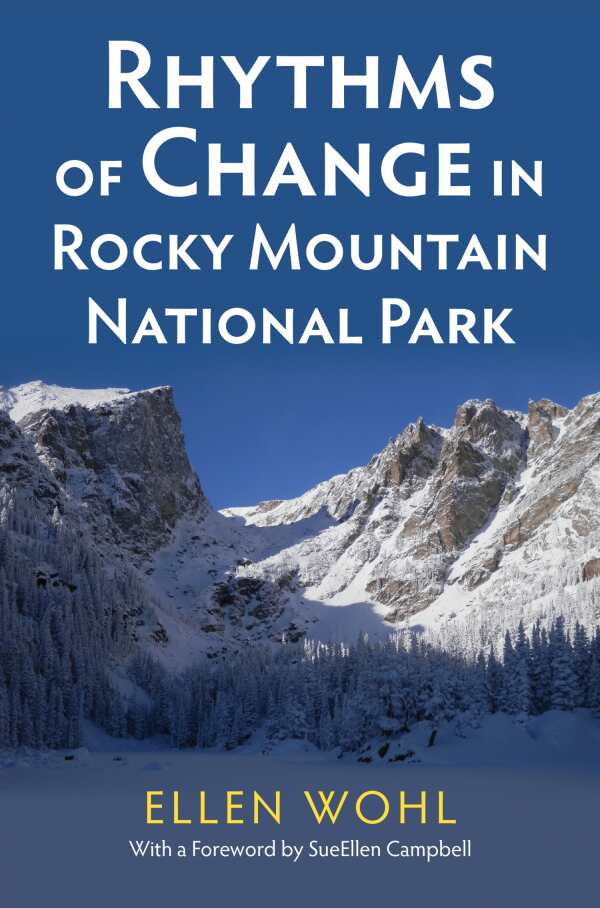It looks like you've stumbled upon a page meant to be read by our code instead of viewed directly. You're probably looking for this page.
Rhythms of Change in Rocky Mountain National Park
A geologist celebrates the beauty of a park and exposes threats it faces.
In Rhythms of Change in Rocky Mountain National Park, Colorado State University geology professor Ellen Wohl characterizes the park as “a protected island of natural habitats surrounded by a sea of human alteration.” Her book, an engaging blend of scientific information and personal observation, celebrates the park’s beauty and exposes the threats it faces in its hundredth anniversary year.
As a geologist studying mountain streams, Wohl recognizes the grave problems confronting Rocky Mountain National Park, including lake acidification, excessive hunting of aquatic predators, forest fires, and summer floods. Originally from Ohio, Wohl has grown fond of the park through her year-round fieldwork. Using an appealing mixture of multiple genres—memoir, travelogue, and scientific text—she tracks the park’s changes over a typical year while also revealing the extent of human-led change over two centuries.
Starting with a typical January, the book proceeds month by month. Each chapter zeros in on a different geographical area of the park as well as a particular topic. This creates a strong feeling of progression, both chronological and thematic. For instance, the February chapter focuses on the Colorado River Valley and flow diversion and debris, while November illuminates Glacier Gorge and the issues of tree blowdowns and beetle infestation.
The book gives plentiful technical information about the park’s geology but always remains attuned to the layman’s understanding. The early pages of the March chapter, for example, are a helpful primer on Earth’s layers and how to investigate them. Thirty-three photographs give a firsthand glimpse of the park’s scope, from sweeping mountain vistas to ice bubbles in Loch Vale.
Wohl’s great-grandmother visited the park in 1930 and brought back a brochure praising Bear Lake’s “seclusion”—no longer true of this popular tourist destination. The author is keenly aware of how her beloved park has been diminished: flooding and wildfires mar the landscape; beavers should be plentiful but struggle to survive. However, it is still a place of natural delights, and Wohl is hopeful that the individuals who love it can make a difference.
Reviewed by
Rebecca Foster
Disclosure: This article is not an endorsement, but a review. The publisher of this book provided free copies of the book to have their book reviewed by a professional reviewer. No fee was paid by the publisher for this review. Foreword Reviews only recommends books that we love. Foreword Magazine, Inc. is disclosing this in accordance with the Federal Trade Commission’s 16 CFR, Part 255.
